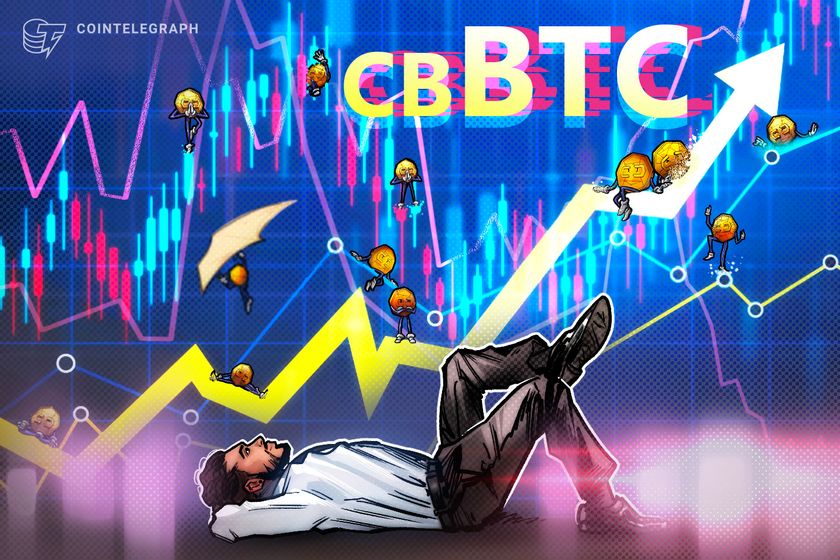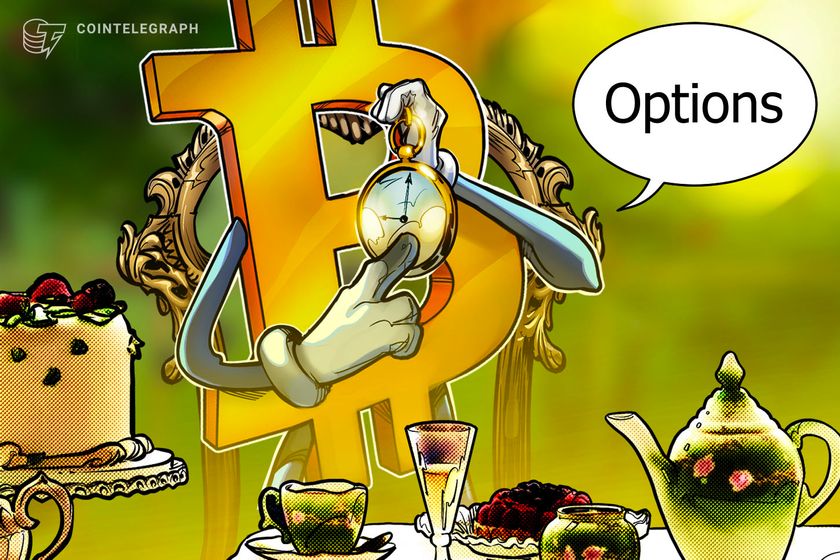Money
Should I fix my energy bills now before the price cap rise?


As of October 1, a typical household will pay £1,717 a year for their energy bills, following a rise in the “price cap”.
This is an increase of £149 over a year – or around £12 a month – the energy regulator said – meaning households can expect to pay more for their energy this winter than they paid since July. However, it is around 6pc less than its level in October last year when it was £1,834.
The rise has been attributed to an increase in wholesale costs since mid-February. Experts predict that the cap could rise even further in January because of recent tensions in the Russia-Ukraine war.
Ofgem’s previous cap saw energy bills fall to the lowest they had been for two years – but the removal of government support means households are still paying far more for their energy than they were before the Russia-Ukraine war.
Some 10 million pensioners will also no longer receive the annual winter fuel allowance after Chancellor Rachel Reeves announced the £200 payment (£300 for over-80s) would only be paid to those already in receipt of pension credit. This means that despite bills falling year-on-year for most households, pensioners will be the only group to see bills go up since last winter.
Here, The Telegraph covers what the energy price cap is, whether it’s time to consider a fixed-term deal, and what you can do now to protect yourself from an energy price rise this winter.
What are fixed energy tariffs?
Fixed energy tariffs are deals offered by energy providers that last for a certain amount of time – usually around 12 months.
During this time, you’ll pay a set amount for your gas and electricity – your bills will vary depending on your usage; it’s your rate that stays the same.
If you don’t sign up for a fixed tariff, the rate is liable to fluctuate in accordance with the energy price cap.
Is fixing energy worth it?
Before the energy crisis, households were used to shopping around for competitive fixed-price deals.
However, the energy crisis upended the market, leaving variable rates governed by the price cap as the only viable option. Fixed rates became so expensive that providers stopped offering them altogether.
As wholesale prices have cooled, a number of fixed-rate deals have come on the market after years of being unavailable.
Fixing can be worth it when wholesale energy prices are set to increase; those on fixed tariffs will escape the resulting price rises. However, by committing to a fixed deal, you also run the risk of paying over the odds if energy prices fall during your contract term.
Gareth Kloet, of comparison site GoCompare, said the change in price cap was a good opportunity for households to assess whether they were paying a competitive rate for their power use.
He said: “If you are thinking about switching your energy deal, consider whether you will have to pay any early exit fees if you leave before your current deal is up. Looking at all of your options on a comparison site is an effective way to see which options are available to you at the moment.”
Energy providers have ramped up exit fees in recent years, meaning that a household looking to ditch an unfavourable rate will likely pay £150-£75 per fuel.
Several providers have introduced fixed rates that are significantly cheaper than the current cap, but such fixes may end up costing consumers more in the long run.
Richard Neudegg, director of regulation at comparison site uSwitch, said: “The price cap is expected to rise again in January, but billpayers can take action now to lock in certainty on how much they pay.
“There are several 12-month fixed deals available at rates cheaper than today’s firm prediction, so run a comparison to see what energy tariffs are available to you.”
Defenders of fixed-rate deals argue they offer long-term security, as unlike variable tariffs they cannot change throughout the duration of the deal. This could shield households from shocks in the wholesale market.
Analysts across the sector predict the cap will rise again when it is reviewed in October, meaning consumers who lock in at rates comparable to the current cap may end up saving money in the long run.
Dr Craig Lowrey, of Cornwall Insight, said: “This is not the news households want to hear when moving into the colder months. Following two consecutive falls in the cap, I’m sure many hoped we were on a steady path back to pre-crisis prices. However, the lingering impact of the energy crisis has left us with a market that’s still highly volatile and quick to react to any bad news on the supply front.
“Despite this, while we don’t expect a return to the extreme prices of recent years, it’s unlikely that bills will return to what was once considered normal. Without significant intervention, this may well be the new normal.”
Is now a good time to fix energy prices?
The main thing to understand when considering a fixed tariff is how the energy price cap is likely to change over the next 12 months/ the duration of the deal. It changes every three months, generally getting cheaper in the summer and more expensive over winter. You’ll need to weigh up whether you’ll stand to save money over the duration of the term.
The price cap from October 2024 to December 2024 is up 10pc to £1,717 a year, an additional £149. Predictions from British Gas suggest the price cap from 1 January 2025 could rise to £1,815 a year, and to £1,825 from 1 April. This is a “best estimate”, and can’t be guaranteed, but it can help to give a sense of what energy prices are expected to do next year.
Of course, as we’ve seen in the past, unexpected global events can have a dramatic knock-on effect on prices. British Gas notes that if conflicts in Ukraine, the Middle East or Taiwan worsen then wholesale gas prices could go up, which would mean higher bills.
What’s the difference between fixed and variable energy?
A fixed tariff means your rate will stay the same for the duration of the contract you’ve signed up to; a standard variable tariff means the rate you pay will go up and down according to the price of energy.
Therefore, if you’re on a fixed tariff, changes to the energy price cap won’t affect you – your rate will stay the same until your contract ends. However, for those on variable rate tariffs, bills are likely to get more expensive if a higher price cap comes into force.
What fixed energy deals are there?
Providers launch new deals regularly, so it’s worth checking in with comparison websites to see what the best value deal is for you.
One of the most competitive deals worth considering is the E.on Next Pledge, which is a variable tariff but it has a fixed discount off the energy price cap units. For 12 months, it will remain £50 less than the energy price cap – but you’ll need to be willing to get a smart meter, pay by direct debit and manage the account online. It’s for new and existing customers, and doesn’t charge any exit fees.
The EDF Energy Ensure tariff works in a similar way; it will also remain £50 cheaper than the price cap for 12 months for the term, and requires a smart meter. If you opt for deal-fuel, you’ll be charged £50 exit fees.
Other types of deals you might want to consider include:
One-year fixes
These are the most common deals. At the time of writing, no classic one-year fixes could beat the July price cap.
Longer-term fixes
Several providers offer two-year fixed tariffs, which might suit those who want the peace of mind of knowing their bills won’t be affected by price cap fluctuations.
Price cap trackers
These deals will see rates change according to wholesale costs, so you’ll be in luck whenever costs fall but could quickly end up with pricier bills when they rise.
Time of use tariffs
These can be good for anyone with an EV charger at home, as they allow you to charge up during cheaper off-peak rates. However, they can be more expensive at “peak” times – such as winter evenings – when there is most pressure on the Grid.
CryptoCurrency
Coinbase’s cbBTC surges to third-largest wrapped BTC token in just one week


According to data from CryptoQuant, cbBTC circulation supply has outpaced long-established players seven days after launch.
CryptoCurrency
Bitcoin options markets reduce risk hedges — Are new range highs in sight?


Bitcoin options market positioning shifted as BTC price shot through the $60,000 to $63,000 level.
CryptoCurrency
Ethereum is a 'contrarian bet' into 2025, says Bitwise exec


Ether price could be on track for another correction into a triple-bottom, marking the beginning of a big rally into 2025.
CryptoCurrency
Blockdaemon mulls 2026 IPO: Report

CryptoCurrency
SEC asks court for four months to produce documents for Coinbase


The financial regulator requested an extension until February 2025 to review “at least 133,582 unique documents” as part of discovery motions with Coinbase.
CryptoCurrency
‘Silly’ to shade Ethereum, the ‘Microsoft of blockchains’ — Bitwise exec


Ethereum is still home to the most active crypto developers and is the most attractive chain to build applications on top of for big companies, argues Bitwise’s Matt Hougan.
-

 Sport7 hours ago
Sport7 hours agoJoshua vs Dubois: Chris Eubank Jr says ‘AJ’ could beat Tyson Fury and any other heavyweight in the world
-

 News1 day ago
News1 day agoYou’re a Hypocrite, And So Am I
-

 Technology6 hours ago
Technology6 hours agoiPhone 15 Pro Max Camera Review: Depth and Reach
-

 News8 hours ago
News8 hours agoIsrael strikes Lebanese targets as Hizbollah chief warns of ‘red lines’ crossed
-

 Sport7 hours ago
Sport7 hours agoUFC Edmonton fight card revealed, including Brandon Moreno vs. Amir Albazi headliner
-

 CryptoCurrency6 hours ago
CryptoCurrency6 hours agoEthereum is a 'contrarian bet' into 2025, says Bitwise exec
-

 CryptoCurrency7 hours ago
CryptoCurrency7 hours agoSEC settles with Rari Capital over DeFi pools, unregistered broker activity
-

 News5 hours ago
News5 hours agoBrian Tyree Henry on voicing young Megatron, his love for villain roles
-

 CryptoCurrency7 hours ago
CryptoCurrency7 hours ago2 auditors miss $27M Penpie flaw, Pythia’s ‘claim rewards’ bug: Crypto-Sec
-

 CryptoCurrency7 hours ago
CryptoCurrency7 hours agoArthur Hayes’ ‘sub $50K’ Bitcoin call, Mt. Gox CEO’s new exchange, and more: Hodler’s Digest, Sept. 1 – 7
-

 CryptoCurrency7 hours ago
CryptoCurrency7 hours agoTreason in Taiwan paid in Tether, East’s crypto exchange resurgence: Asia Express
-

 CryptoCurrency7 hours ago
CryptoCurrency7 hours agoLeaked Chainalysis video suggests Monero transactions may be traceable
-

 CryptoCurrency7 hours ago
CryptoCurrency7 hours agoJourneys: Robby Yung on Animoca’s Web3 investments, TON and the Mocaverse
-

 CryptoCurrency7 hours ago
CryptoCurrency7 hours agoLouisiana takes first crypto payment over Bitcoin Lightning
-

 CryptoCurrency7 hours ago
CryptoCurrency7 hours agoAre there ‘too many’ blockchains for gaming? Sui’s randomness feature: Web3 Gamer
-

 CryptoCurrency7 hours ago
CryptoCurrency7 hours agoCrypto whales like Humpy are gaming DAO votes — but there are solutions
-

 CryptoCurrency7 hours ago
CryptoCurrency7 hours agoHelp! My parents are addicted to Pi Network crypto tapper
-

 CryptoCurrency7 hours ago
CryptoCurrency7 hours ago$12.1M fraud suspect with ‘new face’ arrested, crypto scam boiler rooms busted: Asia Express
-

 CryptoCurrency7 hours ago
CryptoCurrency7 hours ago‘Everything feels like it’s going to shit’: Peter McCormack reveals new podcast
-

 CryptoCurrency7 hours ago
CryptoCurrency7 hours agoSEC sues ‘fake’ crypto exchanges in first action on pig butchering scams
-

 CryptoCurrency7 hours ago
CryptoCurrency7 hours agoFed rate cut may be politically motivated, will increase inflation: Arthur Hayes
-

 CryptoCurrency7 hours ago
CryptoCurrency7 hours agoDecentraland X account hacked, phishing scam targets MANA airdrop
-

 CryptoCurrency7 hours ago
CryptoCurrency7 hours agoBinance CEO says task force is working ‘across the clock’ to free exec in Nigeria
-

 CryptoCurrency7 hours ago
CryptoCurrency7 hours agoBitcoin price hits $62.6K as Fed 'crisis' move sparks US stocks warning
-

 CryptoCurrency7 hours ago
CryptoCurrency7 hours agoCZ and Binance face new lawsuit, RFK Jr suspends campaign, and more: Hodler’s Digest Aug. 18 – 24
-

 CryptoCurrency7 hours ago
CryptoCurrency7 hours agoBitcoin miners steamrolled after electricity thefts, exchange ‘closure’ scam: Asia Express
-

 CryptoCurrency7 hours ago
CryptoCurrency7 hours agoCardano founder to meet Argentina president Javier Milei
-

 CryptoCurrency7 hours ago
CryptoCurrency7 hours agoCertiK Ventures discloses $45M investment plan to boost Web3
-

 CryptoCurrency7 hours ago
CryptoCurrency7 hours agoMemecoins not the ‘right move’ for celebs, but DApps might be — Skale Labs CMO
-

 CryptoCurrency7 hours ago
CryptoCurrency7 hours agoDorsey’s ‘marketplace of algorithms’ could fix social media… so why hasn’t it?
-

 CryptoCurrency7 hours ago
CryptoCurrency7 hours agoTelegram bot Banana Gun’s users drained of over $1.9M
-

 CryptoCurrency7 hours ago
CryptoCurrency7 hours agoLow users, sex predators kill Korean metaverses, 3AC sues Terra: Asia Express
-

 CryptoCurrency7 hours ago
CryptoCurrency7 hours agoSEC asks court for four months to produce documents for Coinbase
-

 CryptoCurrency7 hours ago
CryptoCurrency7 hours agoBlockdaemon mulls 2026 IPO: Report
-

 News5 hours ago
News5 hours ago“Beast Games” contestants sue MrBeast’s production company over “chronic mistreatment”
-

 Technology3 days ago
Technology3 days agoYouTube restricts teenager access to fitness videos
-

 Science & Environment10 hours ago
Science & Environment10 hours ago‘Running of the bulls’ festival crowds move like charged particles
-

 Politics21 hours ago
Politics21 hours agoWhat is the House of Lords, how does it work and how is it changing?
-

 MMA7 hours ago
MMA7 hours agoUFC’s Cory Sandhagen says Deiveson Figueiredo turned down fight offer
-

 MMA7 hours ago
MMA7 hours agoDiego Lopes declines Movsar Evloev’s request to step in at UFC 307
-

 Football6 hours ago
Football6 hours agoNiamh Charles: Chelsea defender has successful shoulder surgery
-

 Football6 hours ago
Football6 hours agoSlot's midfield tweak key to Liverpool victory in Milan
-

 Science & Environment10 hours ago
Science & Environment10 hours agoRethinking space and time could let us do away with dark matter
-

 Science & Environment10 hours ago
Science & Environment10 hours agoHow one theory ties together everything we know about the universe
-

 Entertainment5 hours ago
Entertainment5 hours ago“Jimmy Carter 100” concert celebrates former president’s 100th birthday
-

 News5 hours ago
News5 hours agoJoe Posnanski revisits iconic football moments in new book, “Why We Love Football”
-

 Science & Environment20 hours ago
Science & Environment20 hours agoQuantum to cosmos: Why scale is vital to our understanding of reality
-

 Science & Environment21 hours ago
Science & Environment21 hours agoQuantum time travel: The experiment to ‘send a particle into the past’
-

 Science & Environment18 hours ago
Science & Environment18 hours agoDoughnut-shaped swirls of laser light can be used to transmit images
-

 Science & Environment16 hours ago
Science & Environment16 hours agoThe galactic anomalies hinting dark matter is weirder than we thought
-

 Science & Environment7 hours ago
Science & Environment7 hours agoWe may have spotted a parallel universe going backwards in time
-

 CryptoCurrency7 hours ago
CryptoCurrency7 hours agoTelegram CEO cannot leave France, OpenSea receives Wells notice, and more: Hodler’s Digest, Aug. 25 – 31
-

 CryptoCurrency7 hours ago
CryptoCurrency7 hours agoFive crypto market predictions that haven’t come true — yet
-

 CryptoCurrency7 hours ago
CryptoCurrency7 hours agoSolana unveils new Seeker device, says it’s not just a ‘memecoin phone’
-

 CryptoCurrency7 hours ago
CryptoCurrency7 hours agoCrypto scammers orchestrate massive hack on X but barely made $8K
-

 CryptoCurrency7 hours ago
CryptoCurrency7 hours agoBitcoiners are ‘all in’ on Trump since Bitcoin ’24, but it’s getting risky
-

 CryptoCurrency7 hours ago
CryptoCurrency7 hours agoReal-world asset tokenization is the crypto killer app — Polygon exec
-

 Science & Environment10 hours ago
Science & Environment10 hours agoJupiter’s stormy surface replicated in lab
-

 Science & Environment10 hours ago
Science & Environment10 hours agoFuture of fusion: How the UK’s JET reactor paved the way for ITER
-

 CryptoCurrency7 hours ago
CryptoCurrency7 hours agoBitcoin bull rally far from over, MetaMask partners with Mastercard, and more: Hodler’s Digest Aug 11 – 17
-

 CryptoCurrency7 hours ago
CryptoCurrency7 hours agoVonMises bought 60 CryptoPunks in a month before the price spiked: NFT Collector
-

 CryptoCurrency7 hours ago
CryptoCurrency7 hours agoVitalik tells Ethereum L2s ‘Stage 1 or GTFO’ — Who makes the cut?
-

 CryptoCurrency7 hours ago
CryptoCurrency7 hours agoEthereum falls to new 42-month low vs. Bitcoin — Bottom or more pain ahead?
-
Business6 hours ago
Thames Water seeks extension on debt terms to avoid renationalisation
-
Business6 hours ago
How Labour donor’s largesse tarnished government’s squeaky clean image
-
Business5 hours ago
UK hospitals with potentially dangerous concrete to be redeveloped
-
Business5 hours ago
Axel Springer top team close to making eight times their money in KKR deal
-

 News5 hours ago
News5 hours agoSean “Diddy” Combs denied bail again in federal sex trafficking case
-

 News5 hours ago
News5 hours agoSean “Diddy” Combs denied bail again in federal sex trafficking case in New York
-

 News5 hours ago
News5 hours agoBrian Tyree Henry on his love for playing villains ahead of “Transformers One” release
-

 News5 hours ago
News5 hours agoBrian Tyree Henry on voicing young Megatron, his love for villain roles
-

 News9 hours ago
News9 hours agoPolice chief says Daniel Greenwood 'used rank to pursue junior officer'
-

 News9 hours ago
News9 hours agoChurch same-sex split affecting bishop appointments
-

 Politics2 days ago
Politics2 days agoTrump says he will meet with Indian Prime Minister Narendra Modi next week
-

 Science & Environment10 hours ago
Science & Environment10 hours agoPhysicists have worked out how to melt any material
-

 Politics22 hours ago
Politics22 hours agoKeir Starmer facing flashpoints with the trade unions
-

 CryptoCurrency2 days ago
CryptoCurrency2 days agoBitcoin reclaims $60K and ‘this time is different,’ says analyst
-

 Health & fitness2 days ago
Health & fitness2 days agoWhy you should take a cheat day from your diet, and how many calories to eat
-

 Technology8 hours ago
Technology8 hours agoFivetran targets data security by adding Hybrid Deployment
-

 Science & Environment1 day ago
Science & Environment1 day agoElon Musk’s SpaceX contracted to destroy retired space station
-

 Science & Environment2 days ago
Science & Environment2 days agoOur reality seems to be compatible with a quantum multiverse
-
News7 hours ago
Freed Between the Lines: Banned Books Week
-

 Technology3 days ago
Technology3 days agoMusician charged with using bots to boost streaming revenue
-

 Sport7 hours ago
Sport7 hours agoUFC’s Dan Ige feels confident after Diego Lopes dominates Brian Ortega
-
Business2 days ago
Music mogul Sean Combs charged with racketeering and sex trafficking
-

 MMA6 hours ago
MMA6 hours agoConor McGregor denies allegation he sexually assaulted woman at NBA Finals
-

 News2 days ago
News2 days agoStory Behind Ryan Murphy’s FX Show About Aaron Hernandez
-

 Science & Environment10 hours ago
Science & Environment10 hours agoThe physicist searching for quantum gravity in gravitational rainbows
-

 Football6 hours ago
Football6 hours agoFootball Daily
-

 Science & Environment10 hours ago
Science & Environment10 hours agoHow to wrap your head around the most mind-bending theories of reality
-

 Fashion Models6 hours ago
Fashion Models6 hours agoMiranda Kerr nude
-

 Fashion Models6 hours ago
Fashion Models6 hours ago“Playmate of the Year” magazine covers of Playboy from 1971–1980
-

 Fashion Models6 hours ago
Fashion Models6 hours agoNuméro Switzerland
-

 Health & fitness2 days ago
Health & fitness2 days ago11 reasons why you should stop your fizzy drink habit in 2022
-

 Politics5 hours ago
Politics5 hours agoLabour MP urges UK government to nationalise Grangemouth refinery
-

 Science & Environment13 hours ago
Science & Environment13 hours agoHow Peter Higgs revealed the forces that hold the universe together
-

 News4 days ago
News4 days agoIndia Now Moves from Deliberations to Deliverables on Crimes Against Women
-

 Technology1 day ago
Technology1 day agoWhat will future aerial dogfights look like?
-

 Science & Environment8 hours ago
Science & Environment8 hours agoOdd quantum property may let us chill things closer to absolute zero
-

 Science & Environment15 hours ago
Science & Environment15 hours agoQuantum forces used to automatically assemble tiny device


You must be logged in to post a comment Login